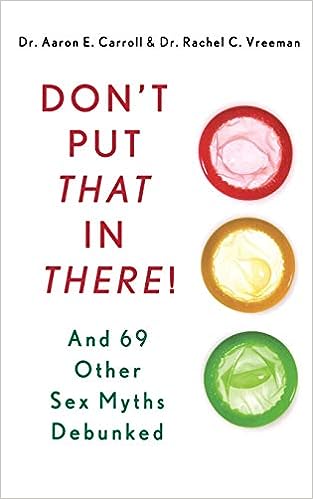Sex Sells, If You're Willing to Show A Lot of Skin
 Two of IUPUI's savviest faculty authors, Aaron Carroll and Rachel Vreeman, recently released their third book in a popular, myth-debunking consumer health series. The first two titles did well, but this one will be a big hit--sex sells:
Two of IUPUI's savviest faculty authors, Aaron Carroll and Rachel Vreeman, recently released their third book in a popular, myth-debunking consumer health series. The first two titles did well, but this one will be a big hit--sex sells:
Carroll, Aaron E., and Rachel C. Vreeman. Don't Put That in There!: And 69 Other Sex Myths Debunked. New York: St. Martin's Griffin, 2014.
